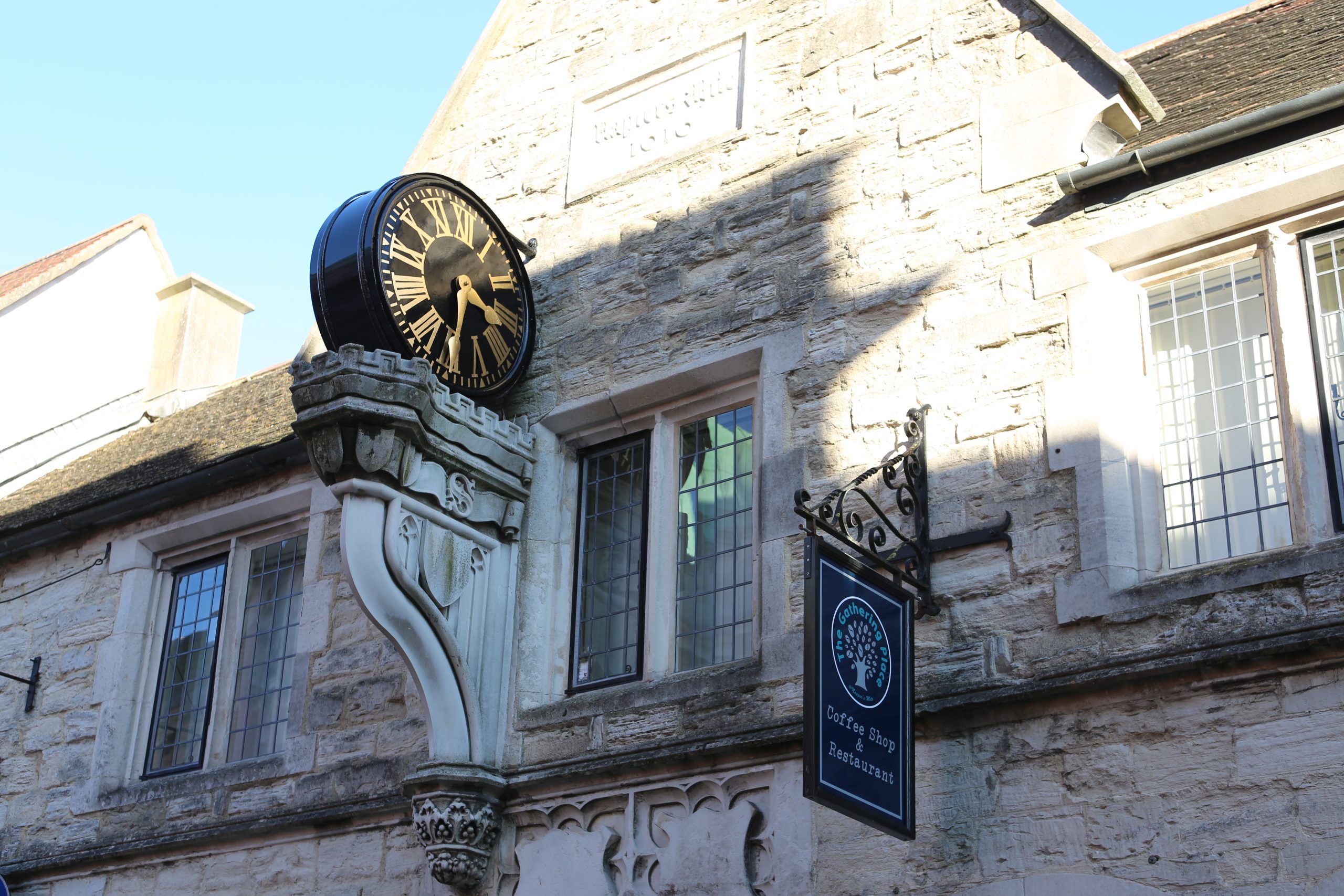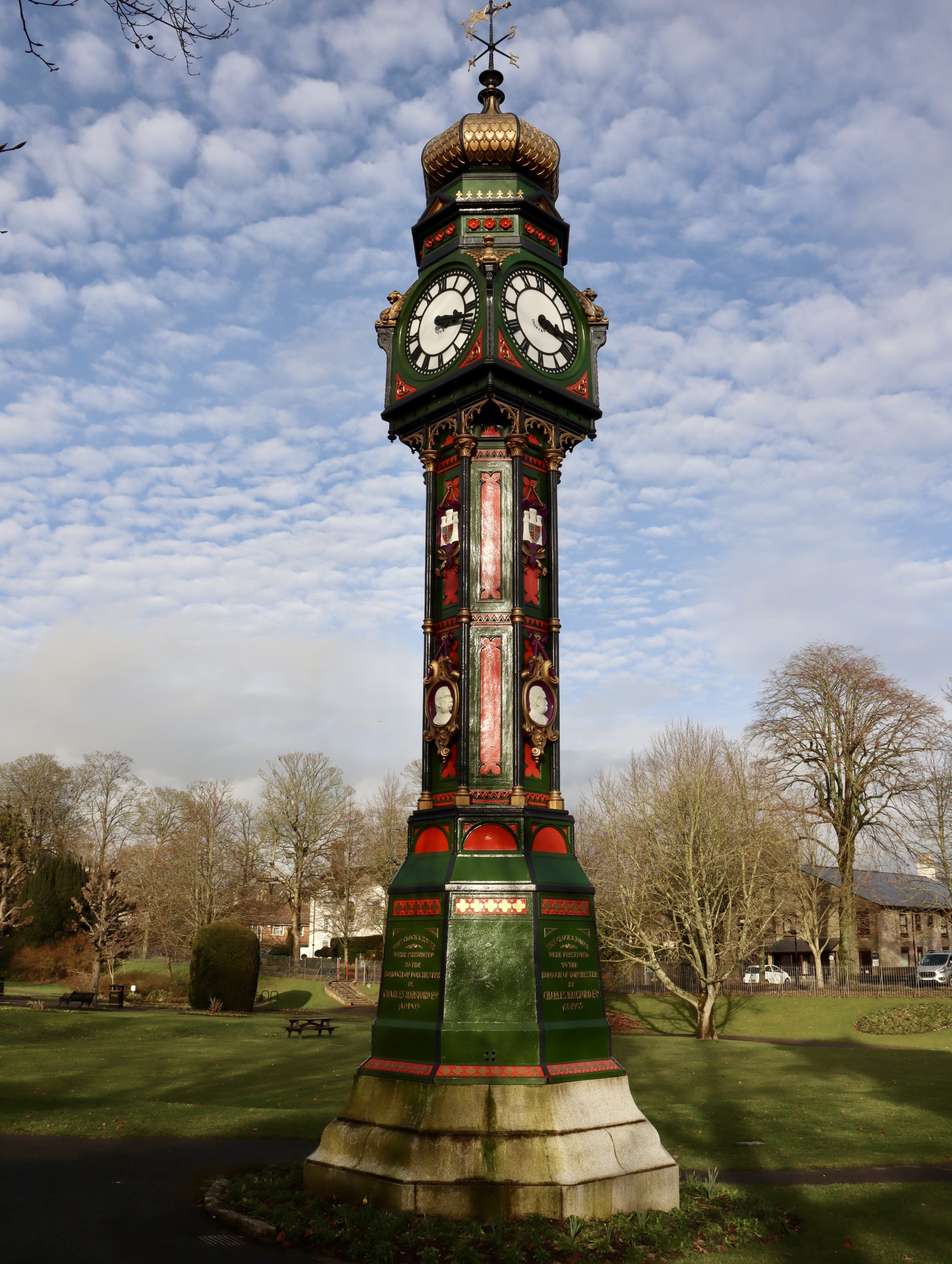At the beginning of the 18th century only a few inhabitants of the town could afford to own a clock or pocket watch. Countrymen relied on the position of the sun to regulate their days and townsfolk checked the time using the few public clocks which existed.
One of those was the clock which now hangs outside Nappers Mite in South Street (PHOTO I), which was the subject of our post in February.
Originally, that clock hung on the facade of the Poor Law Workhouse built in 1745 which stood on the corner of South Street and Trinity Street. In that prominent position it not only served the workhouse to regulate its timetable of work, but greeted travellers arriving from Weymouth and informed them of the time of day. This was important since, until the third quarter of the 19th century, time varied from town to town in the British Isles in accordance with its position in relation to the Greenwich meridian. Dorchester time was one minute and thirty seconds behind Greenwich time, and therefore London time.
This arrangement produced more and more complications and inconvenience as communications and commerce progressed during the century. In particular, the coming of the railways, in the case of Dorchester the Southern Railway in 1847 and the Great Western Railway in 1857, obliged the various railway companies operating throughout the land to coordinate their timetables. Greenwich Mean Time was adopted as ‘Railway Time’ by the companies who formed ‘The Railway Clearing House’ in 1847 for that purpose, and most railway companies applied this uniform time to their schedules from the following year.
However, ‘local time’ continued to apply in other domains, creating ever increasing problems. For example, a celebrated legal judgement was rendered by the Court of Exchequer in London in 1858 on appeal from a decision taken at the Dorchester Assizes:
“The time appointed for the sitting of the Court [in Shire Hall] was 10 o’clock a.m. and the Learned Judge took his seat on the bench punctually at 10 by the clock in the Court. The cause was then called on and the plaintiff’s counsel commenced his address to the jury, but as the defendant was not present and no one appeared for him, the Learned Judge directed a verdict for the plaintiff. The defendant’s counsel then entered the Court and claimed to have the cause re-tried, on the ground that it had been disposed of before 10 o’clock. At that time, it was one minute and a half to ten by the town clock. The clock in Court was regulated by Greenwich time, which was some minutes before the true time in Dorchester. The Learned Judge refused….”.
The Court of Exchequer overturned the decision taken in the Assizes and allowed the defendant to enter an appearance and defend the case brought against him on the grounds that: “Ten o’clock is ten o’clock according to the time of the place, and the town council cannot say that it is not, but that it is 10 o’clock by Greenwich time. Neither can the time be altered by a railway company whose railway passes through the town, nor by any person who regulates the time in the town hall. A person hearing that the court would sit at 10 o’clock would naturally understand that to mean 10 o’clock by the time of the place, unless the contrary was expressed.”
The town clock referred to by the Court of Exchequer was presumably the clock that existed before the new turret was added to the corner of the Corn Exchange by the Mayor Galpin in 1864, completed by a new clock donated four years later by Edward Prince of Wales (later Edward VII), which still graces the High Street today on what is referred to by some today as “Galpin’s Folly” (PHOTO II). Curiously, the new clock is often also one minute or so late!
The last of Dorchester’s public clocks which is noteworthy is the cast-iron tower clock in Borough Gardens erected in 1905 (PHOTO III). It complements the bandstand and park benches installed to celebrate Queen Victoria’s Diamond Jubilee and was donated to the town by Charles Hansford and cast by the Lott & Walne Iron Foundry in Fordington . He also paid for the memorial fountain on the north-east side of the garden as a memorial to his brother-in-law, a prominent former Mayor.
IFBG 25.03.2023



Recent Comments